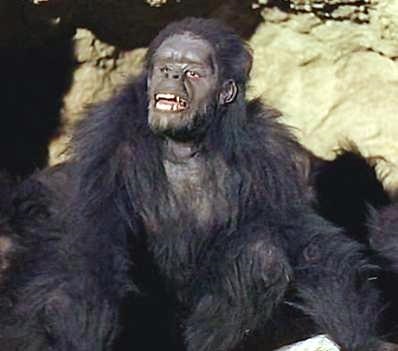 |
| Original 1968 American book cover. Source |
One interesting fact about this book is that it was being written at the same time that the 1968 movie was being produced under film director Stanley Kubrick. The film and book are both based on the short story "The Sentinel" written by Clarke himself in 1951. Clarke would go on to write three other books in the Space Odyssey series: 2010: Odyssey Two in 1982 (with a film adaptation two years later), 2061: Odyssey Three in 1987, and 3001: The Final Odyssey in 1997 (my birth year!). And as mentioned in my last post, Clarke wrote the screenplay for the film. Therefore, as you can imagine, the book should be very similar to what is shown in the movie.
---
So we start off with Chapter 1 titled "The Road to Extinction." The chapter opens up with mention that there has been a drought for ten million years after the "terrible lizards" had been long gone. "Terrible lizard" is a reference to dinosaur, which is what the word means in Latin. The geographical location is in the equator of modern-day Africa. Therefore we can deduce that the setting is a prehistoric Earth millions of years after the extinction of the dinosaurs.
Next we are told of creatures known as "man-apes," presumably hominids, the ancestors of apes and humans. They are on the verge of extinction due to the drought. There are fifty located in various caves in a valley. Their only source of water is from a small stream that sometimes dries out completely.
One morning, a man-ape known as Moon-Watcher wakes up in his cave and realizes that one of the elderly males had died overnight. Apparently, the dead man-ape was his father, but Moon-Watcher does not know that because such familial relationships are incomprehensible to non-humans. Moon-Watcher takes the corpse and disposes it under a bush for the hyenas to eat. Then he returns to his cave, never to acknowledge his father again.
 |
| Moon-Watcher as he appears in the 1968 film. Source |
Moon-Watcher and the others of his tribe go further up the valley to forage for berries, leaves, and occasionally lizards and rodents. Hunting for larger animals is out of the question since the man-apes have not learned how to use tools.
Later the man-apes go to the aforementioned stream to drink, and they are met with another tribe known as the "Others." Both groups quarrel for a bit, but soon stop and drink the stream water.
After foraging for more food in an area populated by creatures resembling antelopes, Moon-Watcher and his tribe go back to their cave. That night, Moon-Watcher overhears some man-apes in another cave being attacked by a leopard. After the commotion is over and the leopard leaves with its victim in its jaws, Moon-Watcher goes outside and looks at the moon, hence his name Moon-Watcher. Here the author mentions he is twenty-five years old, and that if he is lucky he can live another ten years. The last thing mentioned before the chapter ends is a bright light that flashes across the sky twice, probably foreshadowing something to come later in the story.
---
And that was Chapter 1 of 2001: A Space Odyssey. The first chapter serves as the exposition of the story, introducing the setting, the race of beings known as man-apes, and the character of Moon-Watcher. Those of you who have either read this book already or, more likely, have seen the classic film, know what is coming.

No comments:
Post a Comment